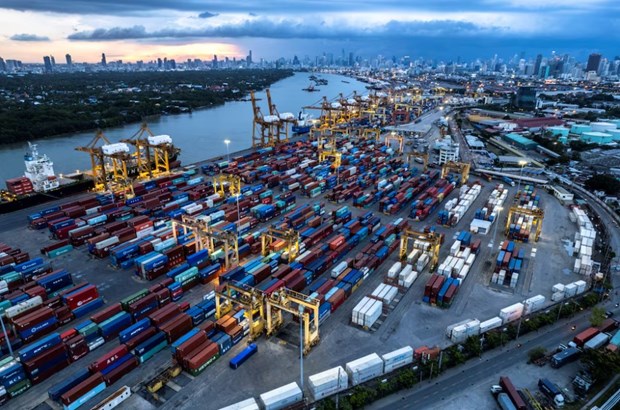Long-term structural obstacles in the export and manufacturing sectors are having significant impacts on Thailand's economy while affecting its ability to compete globally, the Bank of Thailand (BoT) has reported.
 |
| A view of Bangkok's port along Chao Phraya River is photographed during sunset in Bangkok, Thailand, July 19, 2022. (Photo: Reuters) |
Long-term structural obstacles in the export and manufacturing sectors are having significant impacts on Thailand's economy while affecting its ability to compete globally, the Bank of Thailand (BoT) has reported.
According to a recent report of the BoT, the country's export sector has lost competitiveness in global markets, with the market share of rice shipments falling by more than 50% over the past 20 years. Among the products that dented export value growth last year, more than 70% recorded declining competitiveness and other structural headwinds.
Notably, agricultural products such as rice reported a lower market share, from 25% in 2003 to 13% at present. Petrochemical goods are being affected by China's dual circulation strategy, while hard disk drives are being substituted by solid state drives, which Thai producers lack the capability to produce.
The report noted Thailand's electronics export growth averaged only 4% over the past decade, well below its regional peers such as Vietnam, the Philippines and Malaysia, which posted export growth of 37%, 14% and 10%, respectively. The share of imports from China alone increased from 5% to 9% over the same period.
The central bank said exports and manufacturing activity should expand at a moderate pace, in line with the slow recovery in global demand and softer tailwinds from the electronics cycle upturn.
However, structural obstacles, particularly deteriorating competitiveness in the export sector, would increasingly hamper growth and limit spillover benefits from a global demand recovery in the absence of structural reforms.
At the latest meeting, the Monetary Policy Committee (MPC) voted 5-2 to maintain the policy rate at 2.5%. Two members voted to cut the rate by a quarter percentage point.
In addition, the MPC said the current loan-to-value (LTV) measures remain appropriate. Some property developers recently asked the Finance Ministry to loosen the LTV measures to increase activity in the sector.
However, the MPC held that the current LTV measures remained conducive to housing affordability for the vast majority of the public, with 90% of buyers unconstrained by the criteria and able to obtain loans at 100% of property value without a down payment.
VNA








Thông tin bạn đọc
Đóng Lưu thông tin